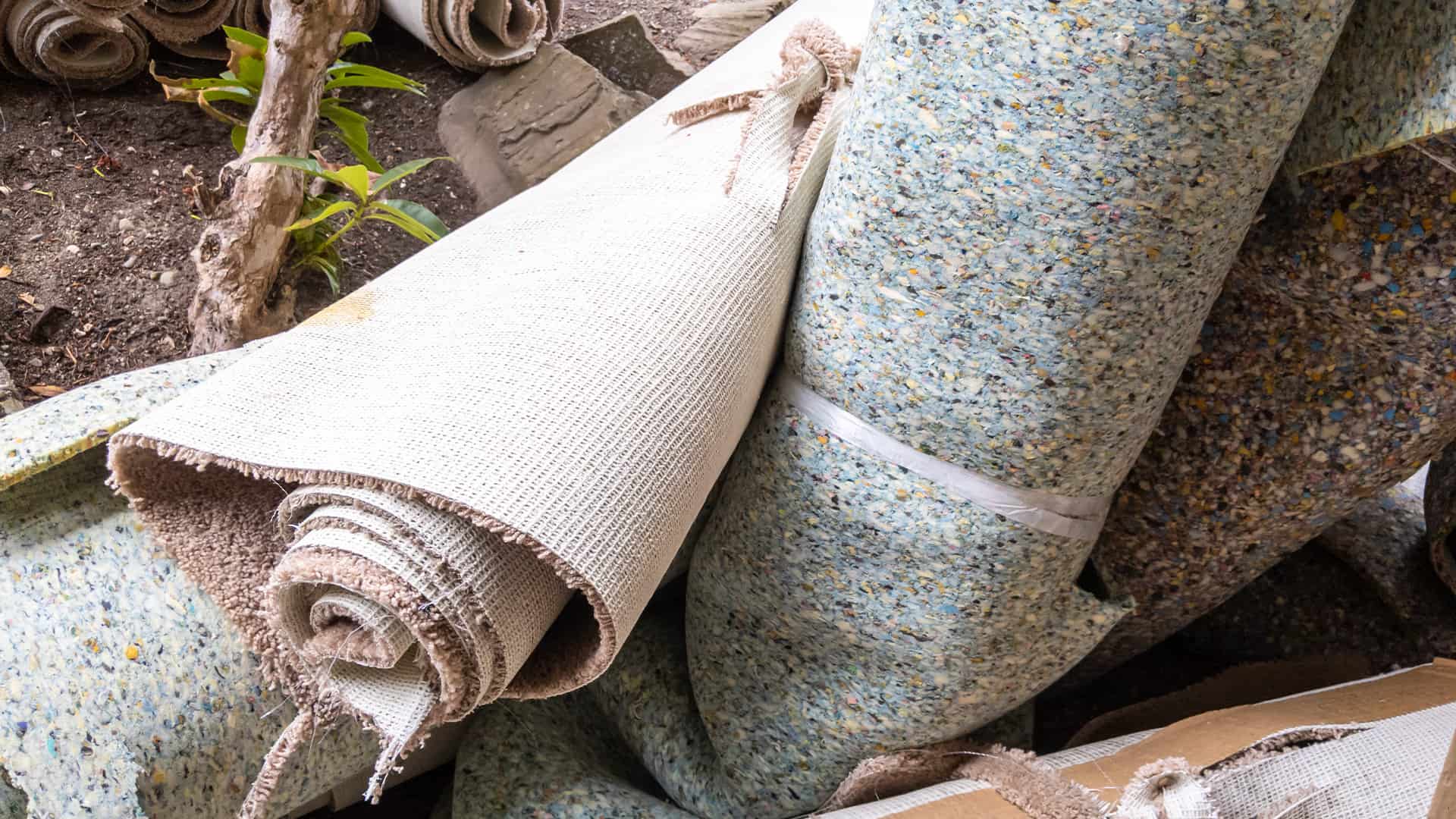Carpet underlay is able to last for 20 years or more, and many manufacturers even offer guarantees for this length of time (as you’ll see below). But it should be noted that this is generally considered a best-case scenario.
In reality, many factors affect a carpet underlay’s lifespan, such as the original quality and thickness of the product, the materials from which it’s made, the level of daily foot traffic and its exposure to environmental factors such as heat and moisture.
In this guide, we will explore the factors that influence the longevity of underlay, the tell-tale signs that your carpet underlay needs replacing, and what you can do to make it last longer.
In This Guide
Factors that determine the lifespan of carpet underlay
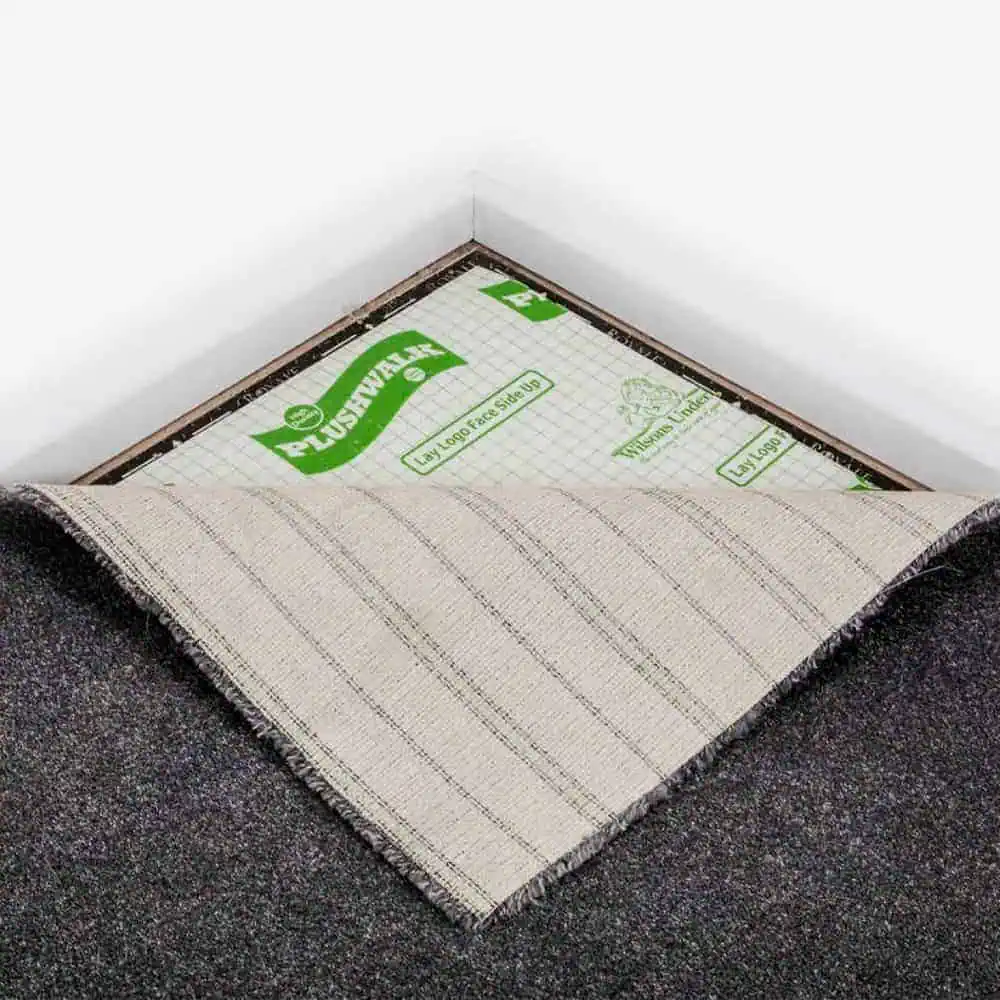
Material type
Underlay is made from a variety of materials, each offering its own unique advantages and lifespan. The most popular types of carpet underlay are:
PU foam underlay: made using recycled materials and offcuts, PU foam underlay is lightweight, environmentally friendly and the most popular option on the market. It can last up to 20 years but you’ll often see performance degrade around the 10- to 15-year mark, depending on the quality of the product. But seeing how the lifespan of a carpet is a similar timeframe, this shouldn’t be a problem.
Crumb rubber underlay: made using recycled car tyres, crumb rubber underlay is extremely dense and durable, offering excellent support and insulation. It’s also the only carpet underlay that can fully recover from loading, so it’s often used for high-traffic areas like stairs as well as commercial applications.
All of this means that you can count on crumb rubber to go the distance, with a lifespan up to 25 years.
Sponge rubber underlay: sponge rubber is a hybrid product that offers the durability and density of rubber with the comfort and easy to handle nature of sponge. Sponge rubber underlay therefore has a lifespan similar to crumb rubber products, with some of the best sponge rubber underlays able to last up to 20-25 years.
Thickness and Density
The thickness and density of your underlay will directly impact how long it lasts. Thick carpet underlay (anything over 10mm) is often spongy and feels supremely comfortable underfoot, making it great for bedrooms, but it can also compress quicker, especially in the areas with the most foot fall, leading to a reduced lifespan.
What’s more important to consider is density. Measured as kg/m³, this number represents how much foam, rubber or sponge rubber is packed into each cubic metre of the product. The higher the figure, the denser and more durable the underlay, meaning it will recover better from foot traffic and ‘loading’ and therefore last longer.
It’s extremely important to get the balance between thickness and density right when choosing a suitable carpet underlay for your home.
Usage and traffic
The amount of foot traffic your carpet endures will significantly impact the lifespan of your underlay. High-traffic areas, such as hallways and stairs, will cause underlay to wear out quicker than low-traffic areas like bedrooms simply because it’s being used more.
This is the reason why the best carpet underlays for stairs are typically slightly thinner but extremely dense, such as Tredaire King or Duralay Durafit 650.
Quality of installation
Proper installation is crucial for ensuring the longevity of your carpet underlay. An incorrectly installed underlay can result in uneven wear, premature degradation and reduced overall performance.
Always use an accredited carpet fitter, such as those listed in the National Institute of Carpet and Floorlayers directory.
Manufacturer guarantees

All of the major carpet underlay brands offer some form of guarantee against the lifespan of their products. Of course, the chances of you actually claiming against the warranty are small, seeing as your flooring will often degrade (or you’ll change it) well before the underlay itself, but it offers peace of mind that your investment will be repaid over time.
Wilsons
Wilsons guarantees its underlay for the lifetime of the initial carpet installation when used in recommended areas.
It’s therefore important to check the Recommendation section of the product technical spec sheets we provide on all Wilsons underlay products.
Cloud 9
Ball & Young, the manufacturer of the extremely popular Cloud 9 underlay brand, guarantees its products for the lifetime of the initial carpet installation when used in recommended areas.
Tredaire
Interfloor guarantees its Tredaire underlay for the serviceable lifetime of the carpet when used in accordance with the End Use Classification. The End Use Classification for each product includes a set of standards and basic performance requirements that the underlay has to adhere to.
You can find the specific End Use Classification on the technical spec sheets we provide on each product page.
Duralay
Like with Tredaire, Interfloor guarantees Duralay underlay for the serviceable lifetime of the carpet when used in accordance with the End Use Classification.
Again, you can find the specific End Use Classification on the technical spec sheets we provide on each product page.
Signs your carpet underlay needs replacing
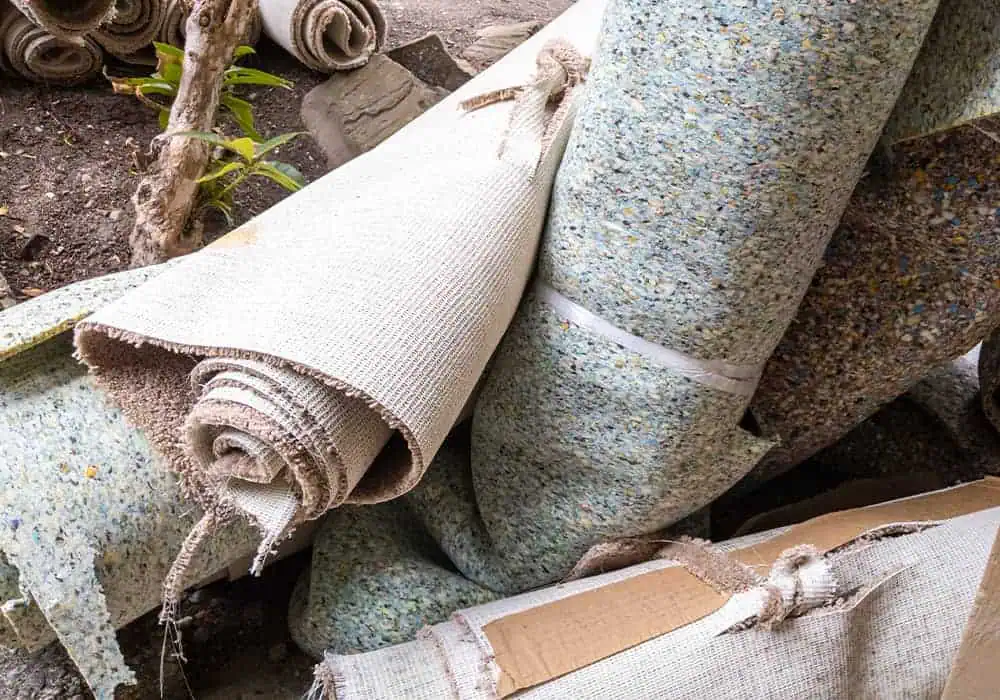
Retirement age
Father Time gets us all in the end. And just like your creaking body, the older your carpet underlay is the more likely it has started to degrade and will need replacing.
Although underlay manufacturers offer long-term guarantees, if your underlay is over 20 years old then there isn’t really a decision to be made: it’s time to buy new.
If it was less than 20 years, then take an honest appraisal of the overall condition of your underlay. Does it look worn out and like it’s seen better days? If so, we would recommend taking it up.
As a general rule of thumb, you should replace your underlay every time you install a new carpet. With the average carpet lifespan being around 10-15 years, the overall performance of your underlay will reduce significantly after this point, and you don’t want the underlay to fail before you’re ready to switch your flooring again.
No support
One of the most noticeable benefits of installing carpet underlay is the soft, spongy feel it offers under foot. But an underlay coming to the end of its lifecycle will feel uneven, lumpy and even uncomfortable to walk on.
So, if you can feel the hard subfloor underneath your feet when walking across the room, it’s probably time to replace your underlay.
Carpet defects
When we say carpet defects, we don’t just mean obvious damage like fraying edges, rips or holes (although those are a clear sign your flooring needs to be renewed).
Underlay acts as a solid, level base for which your carpet to be installed. So if you notice permanent creases, bubbles, wrinkling or rippling developing in your carpet over time, it could be that your underlay has deteriorated and it’s affected the installation. In which case, it’s probably time to replace both.
General hygiene
If you regularly wash and hoover your carpet, yet it never quite smells clean, it could mean that damp or moisture has infiltrated the underlay.
This could be due to spills seeping through the carpet itself, or rising damp from an old concrete subfloor. Either way, the only real solution is to get the underlay up and install new.
If you find yourself in this situation, we’d suggest going for a carpet underlay with an in-built vapour barrier such as Wilsons Plushwalk 12mm.
How to extend the lifespan of carpet underlay
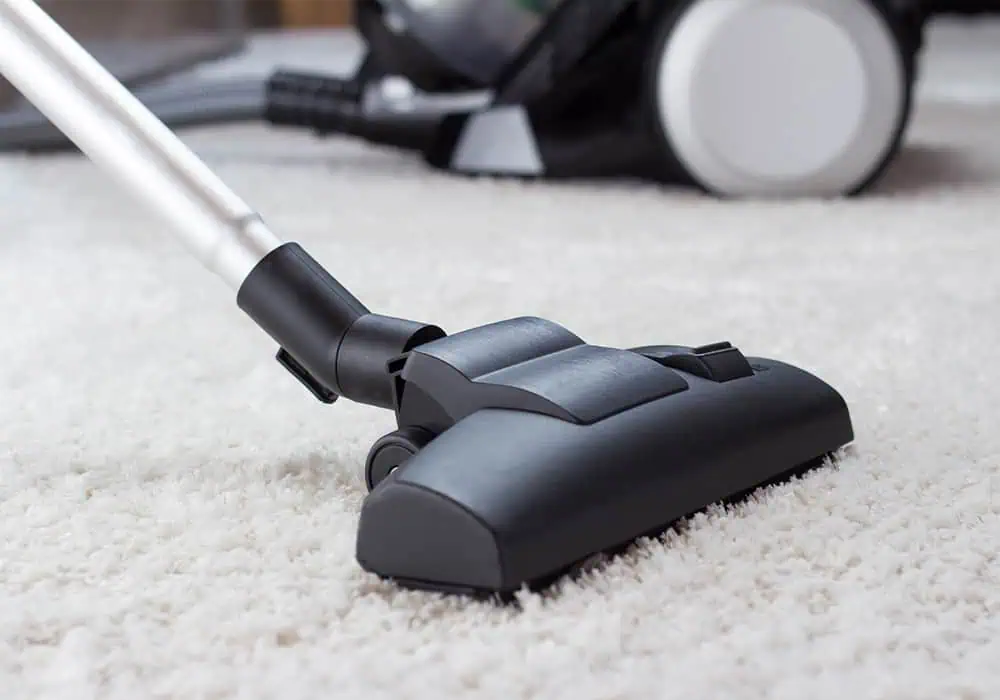
As previously mentioned, how long your chosen underlay lasts primarily comes down to the quality of the product and where it is being installed. However, there are a few things you can do to help increase the lifespan of your carpet underlay which are in your control.
Regular hoovering
Frequent hovering helps remove dirt, dust and debris that can accumulate in the carpet fibres and cause damage to both your flooring and underlay.
Aim to vacuum at least once a week in high-traffic areas and once every two weeks in low-traffic zones.
Take care of spillages
Water and moisture will be readily absorbed by PU foam and rubber sponge (the clue is in the name!) underlay and this can accelerate the degrading of the product.
Therefore, it’s imperative that any spills are blotted up quickly before they have a chance to seep through the carpet and into the underlay.
Reduce moisture
Along similar lines, if your underlay and carpet has been laid in a room where there are known damp issues or excess moisture in the air, then you should look to reduce this any way you can, not only to protect your underlay but to stop mould or damp smells forming.
One of the easiest and less invasive ways of doing this is to invest in a dehumidifier, which will help keep humidity levels at a more manageable level.
Get a professional clean
Hire a professional carpet cleaner to deep clean your carpets once a year. This helps remove embedded dirt and grime that can damage both your carpet and underlay over time.
Rotate furniture regularly
Regularly rearranging furniture helps distribute the weight evenly across your carpet, preventing indentations and excessive wear on the underlay in specific areas.
Use protection
Similarly, try placing protective pads under heavy furniture to help distribute the weight evenly and reduce the pressure on the underlay.
If you have underlay offcuts left over from your installation, these can often be cut down and used for this very purpose.
How often should you replace carpet underlay
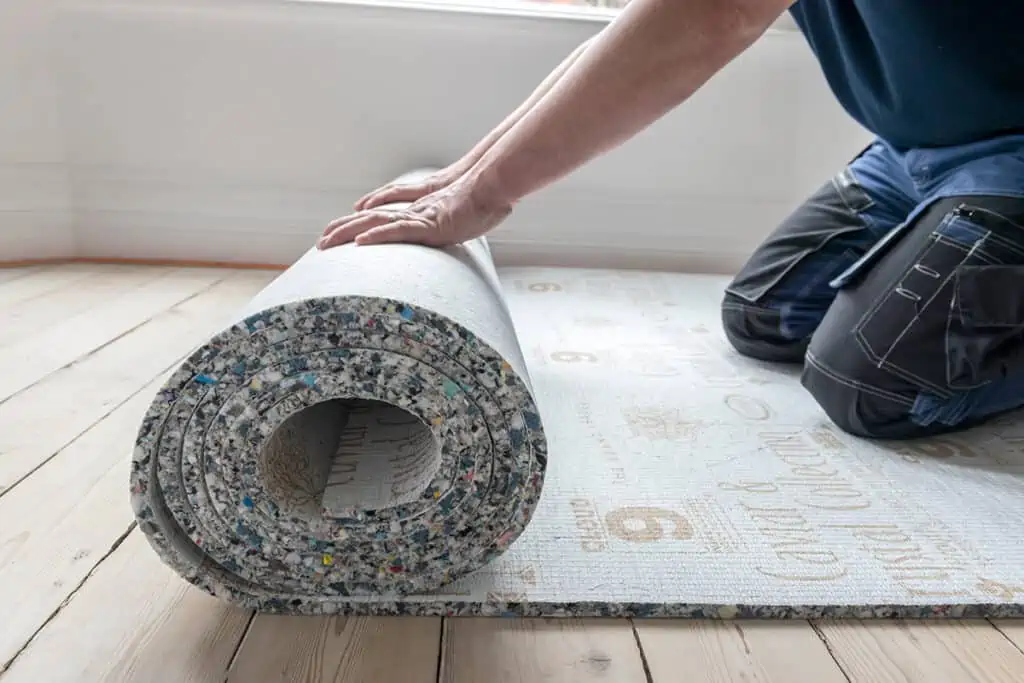
Although a typical carpet underlay will last somewhere between 10 and 25 years, we would always recommend installing new underlay every time you replace your carpets. Old underlay can be reused, but it’s a false economy: the underlay will fail before the carpet, which means you’ll need to replace your flooring again in almost half the time.
Not only that, installing a new high quality underlay offers multiple benefits, including extending the lifespan of your flooring (ensuring a better return on your investment), reducing heat loss and sound, and increased comfort under foot.

